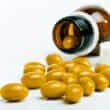Background
- Royal jelly is a substance that is made in the glands of young nurse worker bees (Apis mellifera). It is used to feed their queen bee and expand her life span over that of other bees. Royal jelly is a milky white liquid that contains many nutrients, including protein, vitamins, and minerals.
- Royal jelly is often used to improve general health. It has also been used to treat stomach and hormonal problems, as well as to reduce symptoms of aging and improve mood. Royal jelly has been used to decrease inflammation, blood pressure, and cholesterol levels. It can sometimes be found in cosmetic products for skin problems.
- There is a lack of evidence supporting the use of royal jelly for any medical condition.
- Royal jelly should be avoided in people who have asthma or any existing allergies, due to the high risk of an allergic reaction.
References
- Boukraa L and Sulaiman SA. Rediscovering the antibiotics of the hive. Recent Pat Antiinfect.Drug Discov. 2009;4(3):206-213. View Abstract
- Calli C, Tugyan K, Oncel S, et al. Effectiveness of Royal Jelly on Tympanic Membrane Perforations: An Experimental Study. Journal of Otolaryngology -- Head & Neck Surgery. 2008;37(2):179-184.
- Cherniack EP. Bugs as drugs, Part 1: Insects: the "new" alternative medicine for the 21st century? Altern.Med.Rev. 2010;15(2):124-135. View Abstract
- El-Fiky S, Othman E, Balabel E, et al. The Protective Role of Royal Jelly Against Mutagenic Effect of driamycin and Gamma Radiation Separately and in Combination. Trends in Applied Sciences Research. 2008;3(4):303-318.
- Harada S, Moriyama T, and Tanaka A. [Two cases of royal jelly allergy provoked the symptoms at the time of their first intake]. Arerugi 2011;60(6):708-713. View Abstract
- Hayakawa K, Katsumata N, Hirano M, et al. Determination of biotin (vitamin H) by the high-performance affinity chromatography with a trypsin-treated avidin-bound column. J.Chromatogr.B Analyt.Technol.Biomed.Life Sci. 6-15-2008;869(1-2):93-100. View Abstract
- Katayama M, Aoki M, and Kawana S. Case of anaphylaxis caused by ingestion of royal jelly. J.Dermatol. 2008;35(4):222-224. View Abstract
- King DS, Baskerville R, Hellsten Y, et al. A-Z of nutritional supplements: dietary supplements, sports nutrition foods and ergogenic aids for health and performance-Part 34. Br.J.Sports Med. 2012;46(9):689-690. View Abstract
- Mizutani Y, Shibuya Y, Takahashi T, et al. Major royal jelly protein 3 as a possible allergen in royal jelly-induced anaphylaxis. J.Dermatol. 2011;38(11):1079-1081. View Abstract
- Morita H, Ikeda T, Kajita K, et al. Effect of royal jelly ingestion for six months on healthy volunteers. Nutr.J. 2012;11:77. View Abstract
- Munstedt K, Henschel M, Hauenschild A, et al. Royal jelly increases high density lipoprotein levels but in older patients only. J.Altern.Complement Med. 2009;15(4):329-330. View Abstract
- Suzuki KM, Isohama Y, Maruyama H, et al. Estrogenic activities of Fatty acids and a sterol isolated from royal jelly. Evid.Based.Complement Alternat.Med. 2008;5(3):295-302. View Abstract
- Viuda-Martos M, Ruiz-Navajas Y, Fernandez-Lopez J, et al. A. Functional properties of honey, propolis, and royal jelly. J.Food Sci. 2008;73(9):R117-R124. View Abstract
- Yakoot M, Salem A, and Omar AM. Effectiveness of a herbal formula in women with menopausal syndrome. Forsch.Komplementmed. 2011;18(5):264-268. View Abstract
- Yamada N and Yoshimura H. [Determinants of chilliness among young women and their application to psychopharmacological trials]. Nihon Shinkei Seishin Yakurigaku Zasshi 2009;29(5-6):171-179. View Abstract







